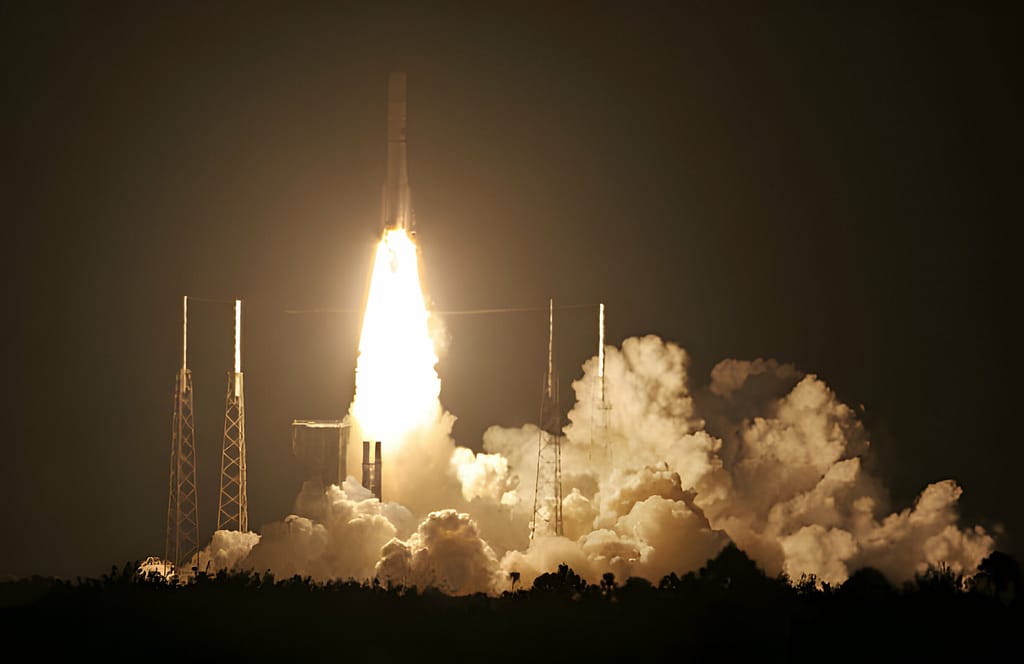The much-anticipated Peregrine lander, part of a private mission to deliver the remains of “Star Trek” cast members and NASA payloads to the Moon, faced a catastrophic end as it crashed into the Pacific Ocean after suffering a propulsion failure. The mission, a collaboration between Celestis, NASA, and Astrobotic, aimed to make history by becoming the first private venture to successfully land on the Moon, a goal that was thwarted by technical difficulties.
Table of Contents
Controlled Crash to Earth
Astrobotic, the private space robotics company responsible for the lunar mission, has announced that the malfunctioning vessel is being prepared for a controlled crash back to Earth. The crash is planned over a remote area of the South Pacific to ensure the safety of both the spacecraft and any potential hazards. Despite the propulsion system failure, Astrobotic is determined to execute a safe re-entry, prioritizing the protection of the public and the environment.
Trouble Strikes Mid-Journey For Peregrine lander
Peregrine, launched on a United Launch Alliance Vulcan rocket from Cape Canaveral Space Force Station in Florida, encountered issues approximately seven hours after liftoff. A failure in the spacecraft’s propulsion system led to a “critical loss of failure,” prompting Astrobotic to abandon its original moon landing mission. The intended soft landing on the Moon, scheduled for February 23, became an unattainable goal due to the propellant leak.
Unexpected Engineering Success

Astrobotic engineers and scientists worked diligently to diagnose and address the issues plaguing the Peregrine lander. Despite the failure, the team managed to extend the spacecraft’s operational life beyond expectations. The fault was traced to a leaking oxidiser tank, causing a thrust imbalance that prevented the lander from maintaining a stable position with its solar panels oriented toward the Sun.
While the Peregrine lander did not achieve its primary objective, experts view the mission as an “incredible engineering success.” Astrobotic’s perseverance and problem-solving skills allowed the spacecraft to continue operating in space for over 10 days, providing valuable insights and data. This experience, though challenging, contributes to the ongoing learning curve in space exploration.
Future Collaborations and Opportunities
The Peregrine Mission One, while facing a premature end, highlights the risks inherent in lunar missions and the challenges of private-public collaborations. NASA, along with private companies like Astrobotic, remains committed to pushing the boundaries of lunar exploration. The mission’s unique design and technology have paved the way for future lunar endeavors, demonstrating the importance of learning from setbacks and refining approaches for subsequent attempts.
Moving Forward
The failure of the Peregrine lunar mission underscores the complexity and unpredictability of space travel. As authorities plan a controlled re-entry for the compromised spacecraft, the focus shifts to salvaging the mission’s scientific instruments and assessing the data collected during its operational period. While the Peregrine lander may not have landed on the Moon, the mission provides crucial insights into system resilience and readiness for future lunar endeavors. Each challenge in space exploration presents an opportunity for learning and improvement, making the next attempt more likely to succeed.
In conclusion, while the Peregrine lander’s journey to the Moon ended in unexpected flames over the Pacific Ocean, the collaborative efforts and technical advancements achieved during the mission contribute to the ongoing pursuit of lunar exploration. As space agencies and private companies continue to embark on ambitious missions, the Peregrine experience serves as a reminder of the inherent risks and the determination required to overcome challenges in the vast expanse of outer space.